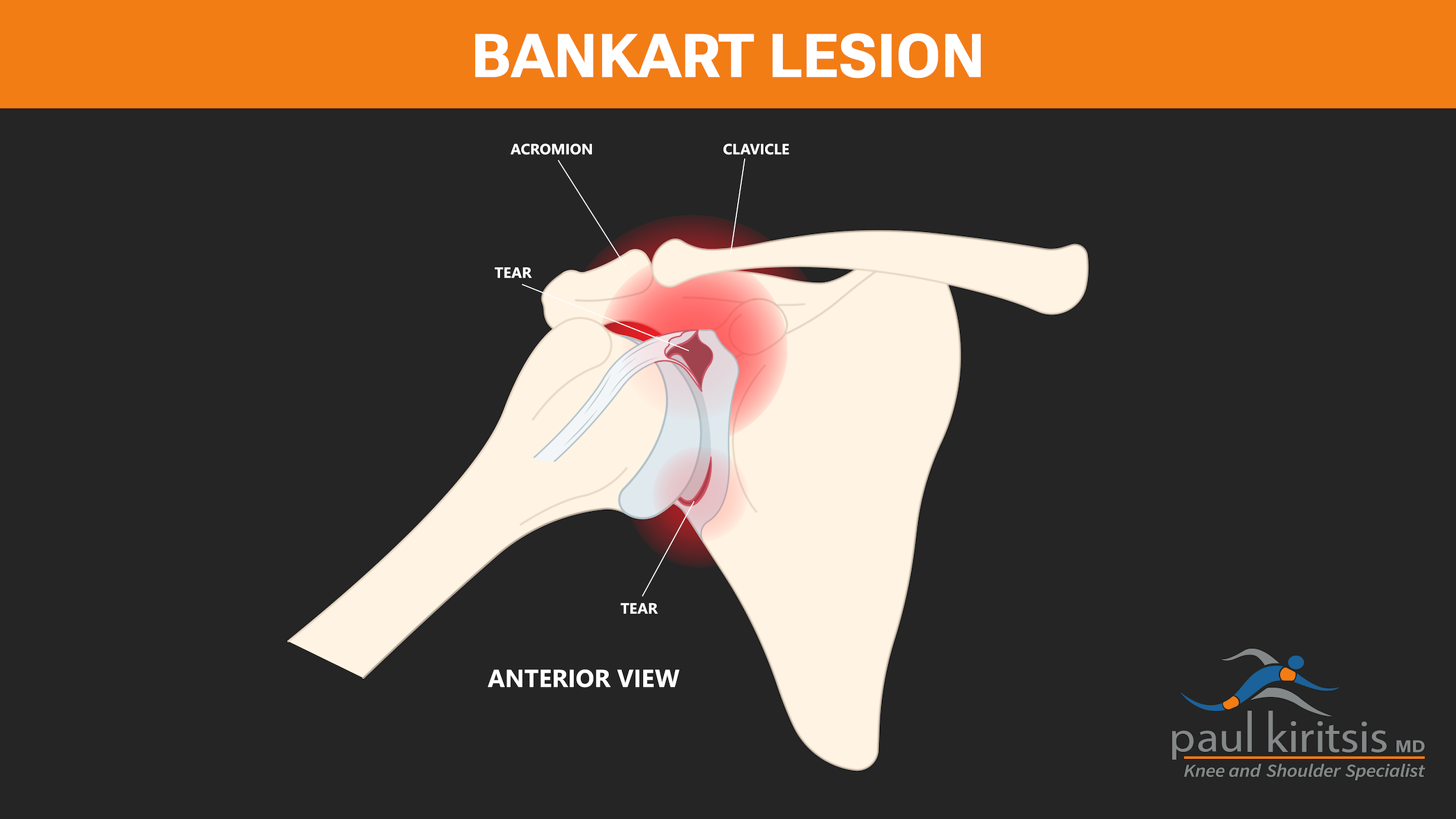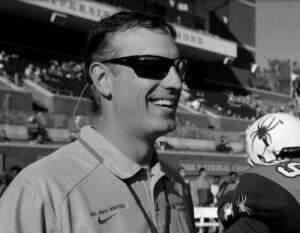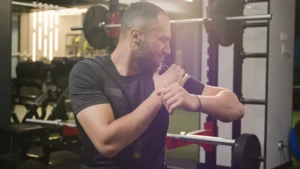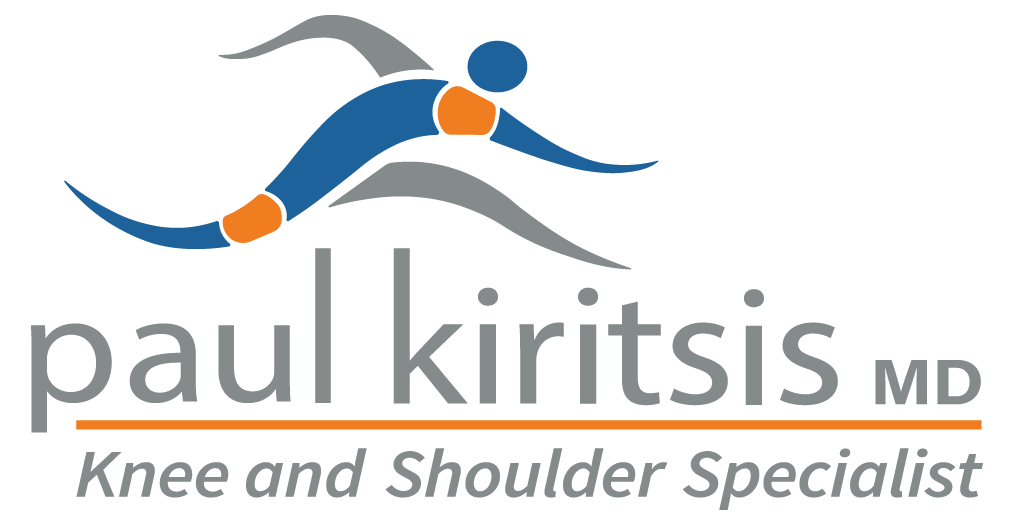A Bankart reconstruction is a surgical intervention designed to address shoulder instability, primarily caused by a specific type of ligament injury known as a Bankart lesion. If you’re struggling with recurrent shoulder dislocations or experiencing shoulder weakness that limits your daily activities and participation in sports, understanding how a Bankart repair can restore stability and function to your shoulder joint is essential.
This article provides a comprehensive guide to the Bankart repair procedure, its indications, techniques, potential risks, and what you can expect during the recovery process.
Key Takeaways
- Bankart surgery is a procedure used to correct recurrent shoulder dislocations by reattaching lax ligaments to restore shoulder stability, with its success influenced by the surgeon’s experience and the frequency of the surgical center performing this procedure.
- Various techniques for Bankart repair, particularly arthroscopic methods, are favored for reducing recurrent shoulder instability and their success rates are comparable to open repair techniques thanks to advancements in surgical equipment.
- Recovery from Bankart surgery involves postoperative pain management, immobilization, and a rehabilitation protocol that includes physical therapy to restore joint strength and flexibility, with return to athletics in 4-6 months.
Understanding Bankart Repair
The Bankart repair procedure, named after British surgeon Arthur Bankart, is a surgical technique that fixes recurrent shoulder dislocations by reattaching lax ligaments to their anatomical positions in the shoulder joint and typically entails re-anchoring the torn labrum. This procedure, which lasts approximately one hour is conducted under general anesthesia.
The primary aim of Bankart repair surgery is to restore stability, function, and comfort to shoulders that suffer from dislocations and instability. It directly addresses shoulder instability by securing the joint and preventing the ball of the shoulder from slipping out of the joint.
It’s important to note that the outcomes of a Bankart repair can be significantly influenced by the experience of the surgeon and the frequency with which the surgical center performs this procedure.
The Bankart Lesion

The most common form of ligament injury to the shoulder is known as a Bankart lesion. It occurs from a traumatic dislocation of the shoulder joint. It involves a tear of the labrum and ligaments from the glenoid socket, contributing to recurrent anterior shoulder instability. This kind of lesion is a common injury that can occur during sports activities.
When the glenoid labrum, a ring of cartilage that surrounds the shoulder socket, and the ligaments that stabilize the shoulder, including the rotator cuff, are torn from the glenoid socket, the shoulder becomes unstable. This condition, often referred to as a Bankart lesion, is one of the main reasons why people experience recurrent anterior shoulder instability due to a torn labrum.
It’s a condition that can greatly limit your ability to participate in sports and other activities that require a full range of shoulder motion due to shoulder weakness.
Shoulder Anatomy and Instability
The shoulder is comprised of structures that work together to achieve a balance between mobility and stability. It is the most mobile joint in the body, capable of a full 360-degree range of motion. This mobility comes at a cost, though, as the shoulder is also one of the most unstable joints, easily susceptible to dislocation and injury.
The main stabilizing mechanism of the shoulder is a concept known as concavity compression. This is the principle that the joint surfaces fit together so that the round humeral head is nestled within the cup-like glenoid fossa. This configuration allows for a wide range of motion while maintaining joint stability. However, when this balance is disrupted, as in the case of a Bankart lesion, the result is often shoulder instability.
Indications for Bankart Repair
Patients are considered for Bankart reconstruction surgery based on the following criteria:
- Recurrent instability or dislocations
- Apprehension
- Confirmed Bankart lesion
- Young age at time of initial injury indicating high risk of recurrence
- Need for improved shoulder functions
- Dislocation in a contact athlete
Bankart repair surgery is not deemed an emergency and can be planned according to the optimal timing for the patient’s overall health.
This surgery is considered effective in reducing pain and preventing recurrent shoulder dislocations.
Traumatic Anterior Shoulder Instability
Traumatic anterior shoulder instability, also known as traumatic anterior instability, is a type of shoulder instability caused by injury. It occurs when the ligaments and the labrum at the lower front part of the shoulder are torn due to an injury typically sustained with the arm extended to the side. High-risk individuals such as athletes and military personnel, who are prone to capsulolabral injuries from traumatic anterior shoulder instability, are potential candidates for surgical intervention via Bankart repair.
Bankart repair surgery is effective in reducing pain and preventing future dislocations in patients suffering from traumatic anterior shoulder instability. By securing the torn ligaments and labrum back to their anatomical positions, the shoulder joint is once again stabilized, reducing the discomfort and instability caused by the original injury.
Recurrent Dislocations
Patients with an ISIS score of 7 or higher have a 70% risk of recurrent shoulder dislocation. The ISIS score, or Instability Severity Index Score, is a tool used by orthopedic surgeons to predict the risk of recurrent shoulder dislocation after a primary dislocation. It takes into account factors such as the patient’s age, sports participation, and the presence of a Bankart lesion.
Recurrent shoulder dislocations often result from Bankart lesions, which can occur due to impacts or falls while the arm is extended. In cases of recurrent dislocations where the bone of the anterior lip of the glenoid socket is deficient, grafting can be used as a surgical intervention. By restoring the anatomical structures of the shoulder, this procedure helps prevent future dislocations and improve shoulder function.
Bankart Repair Techniques
There are various techniques for Bankart repair, including open and arthroscopic methods, and they play a critical role in reducing recurrent shoulder instability and improving shoulder function. The open Bankart repair has historically had a high success rate, although it is associated with some post-operative limitations such as reduced external rotation and potential development of secondary osteoarthritis.
On the other hand, arthroscopic Bankart repair has gained favorability among surgeons due to advancements in arthroscopic tools and increased surgical skill, offering desirable outcomes for patients. Improvements in arthroscopic techniques, backed by the evolution of surgical equipment, have led to enhanced effectiveness and patient satisfaction in arthroscopic Bankart repair.
Arthroscopic Bankart Repair
Arthroscopic Bankart repair is typically performed as an outpatient surgery that involves inserting a camera through small incisions to view internal structures, and using anchors and sutures to reattach the labrum to the glenoid bone. Modern arthroscopic suture anchors have enhanced the success rates of arthroscopic Bankart repair, making these rates comparable to those of previous open repair techniques.
Potential Risks and Complications
Like any surgical procedure, Bankart Shoulder Repair comes with its own set of risks and potential complications. The overall complication rate for arthroscopic Bankart repair, however, is relatively low, with frozen shoulder and persistent pain being the most common issues patients face post-surgery.
Recovery and Rehabilitation
Recovery after a Bankart repair includes the following steps:
- Immediately following surgery, a regional block is used to provide pain relief up to 24 hours.
- The shoulder is immobilized in a sling for four weeks.
- Stitches are typically removed 10 to 14 days after surgery.
The duration of recovery varies among patients, ranging from three months up to a year, depending on individual progress and adherence to the rehabilitation protocol. During the first 4 weeks post-surgery, protected motion is crucial to ensure safe rehabilitation. Gradual and controlled motion of the shoulder is encouraged to prevent stiffness and promote healing.
Physical Therapy
Physical therapy, guided by a skilled physical therapist, is a crucial part of the recovery process after Bankart repair and typically starts four weeks after the surgery is performed. It involves a series of exercises designed to restore strength and flexibility to the shoulder joint. Adherence to the physical therapy program significantly enhances postoperative outcomes for patients who have undergone Bankart repair.
Postoperative stiffness is a known complication after Bankart repair surgeries, which can lead to a significant loss of motion in the shoulder. Physical therapy, along with interventions such as corticosteroid injections and arthroscopic capsular release, plays a key role in managing stiffness following Bankart repair.
Timeline and Milestones
After undergoing Bankart repair, patients can expect to follow a specific timeline for recovery milestones. The average recommended duration for sling immobilization following Bankart repair surgery is approximately 4 weeks. Postoperative care protocols for Bankart repair may include an initial period of strict immobilization, differing among recommendations for sling duration and commencement of exercises.
Physical therapy typically starts with passive range of motion exercises, advancing to active range of motion, with a goal of achieving full passive and active range of motion by 9 to 12 weeks post-surgery. Patients can generally expect to resume driving around six weeks after surgery, with full shoulder use anticipated by the tenth week.
The timeline for returning to sports activities varies depending upon the type of sport or activity you perform. Most athletes can typically return to their sport five months after the surgery.
Returning to Activities and Sports
Getting back to normal activities and sports after Bankart repair is a major concern for many patients. Here are some guidelines for returning to different activities:
- Swimming, golf, and tennis: Patients can often return to these activities 12-16 weeks after their surgery.
- Sports: The average time for returning to sports after an arthroscopic Bankart repair is approximately 5.9 months.
- Activities of daily living: Patients can start performing gentle activities of daily living with the operated arm at the side starting 4 weeks after surgery.
- Walking and gentle activities: Walking and use of the arm for gentle activities are encouraged during the intial postoperative phase.
After surgery, it’s generally best to avoid lifting anything heavier than a cup of coffee for six to twelve weeks, depending on the specific procedure. It’s important to follow this recommendation to allow your body to properly heal. High rates of return to sports have been reported following arthroscopic Bankart repair, with one systematic review noting an 81% return rate and many athletes able to return to their pre-injury level of sports participation.
Contact Sports
For those involved in contact sports, the transition back to full participation can be a bit more complex. Patients should refrain from contact sports for at least five months after surgery. However, they may be able to resume swimming after four months. Contact or collision sports athletes often require a longer time to return to play post-surgery due to specific considerations in these sports.
The return to sports rates after Bankart repair can vary significantly, with some contact sports showing lower return rates. This is why it’s essential to follow your doctor’s advice and not rush the recovery process.
Preventing Recurrence
Even after successful Bankart repair surgery, it’s important to remember that continuous monitoring and evaluation of shoulder function post-surgery are vital for preventing recurrence of dislocations.
Regular check-ups, including a physical examination, with your orthopedic shoulder surgeon and continuing with physical therapy exercises at home can go a long way in maintaining shoulder stability and preventing future dislocations.
Summary
Shoulder stability is crucial for maintaining an active and pain-free life. Recurrent shoulder dislocations can pose a significant challenge, but with the right treatment and care, it’s possible to regain function and return to regular activities. The Bankart repair procedure offers a viable solution for those struggling with shoulder instability, providing restored function and relief from discomfort. Remember, the road to recovery requires patience, adherence to postoperative care protocols, and dedication to physical therapy. Here’s to strong and stable shoulders!
Frequently Asked Questions
What is Bankart repair surgery?
Bankart repair surgery is a procedure that reattaches loose ligaments and torn cartilage in the shoulder joint to address recurrent shoulder dislocations. This surgery helps stabilize the shoulder joint and prevent further dislocations.
Who is a suitable candidate for Bankart repair surgery?
Bankart repair surgery is suitable for individuals with recurrent shoulder instability, a confirmed Bankart lesion, and a need for improved shoulder function, particularly those at a high risk of recurrence due to a young age at the time of the initial injury.
How long does it take to recover from Bankart repair surgery?
Recovering from Bankart repair surgery can take anywhere from five months to a year, depending on your progress and commitment to rehabilitation.
When can I return to sports after Bankart repair?
The timeline for returning to sports after Bankart repair varies, with most athletes typically returning to their sport after five months





